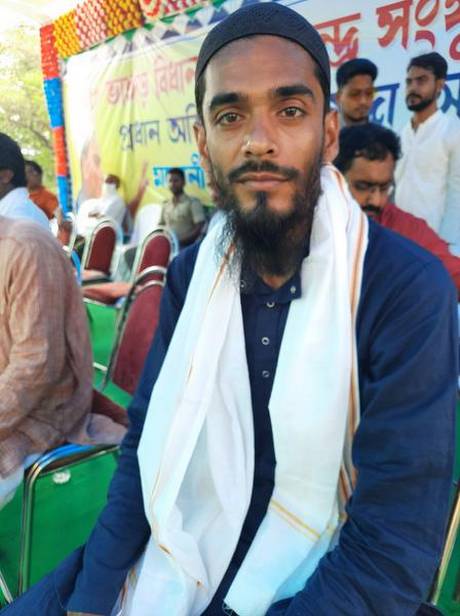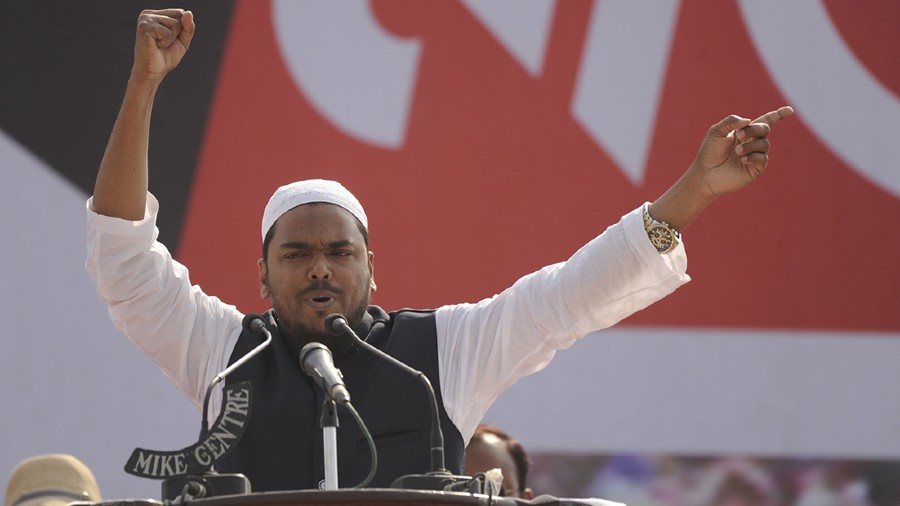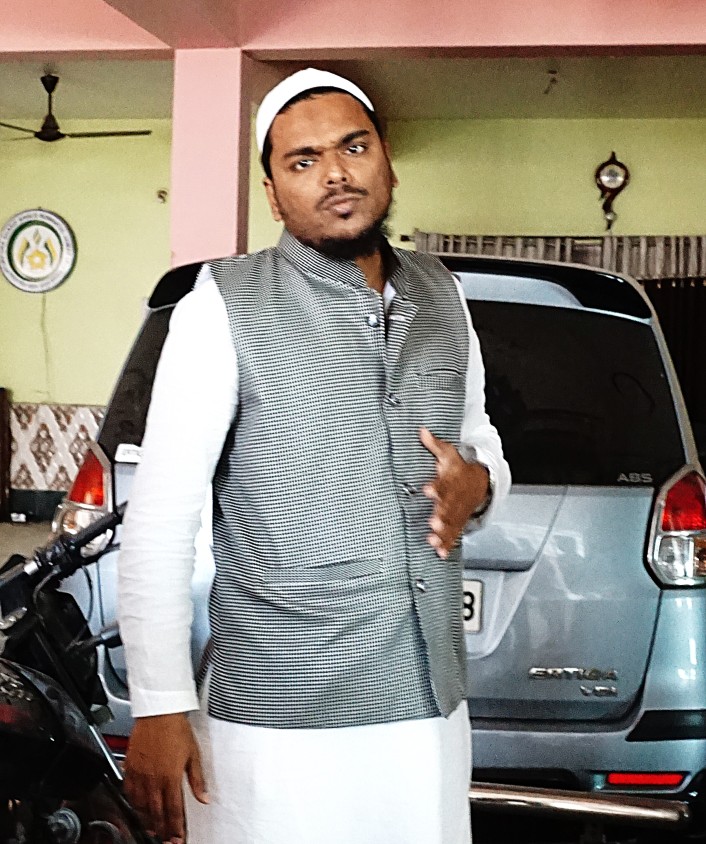WEST BENGAL :
Site of land conflict, the constituency on the outskirts of Kolkata will prove key to the future of the Opposition alliance.
Two of the three hawkers selling hard-boiled sweets and iced water tubes at the Indian Secular Front (ISF) rally at the Bhojerhat football ground in Bhangar on the last day of campaigning had decided on their choice for MLA — the Samyukta Morcha candidate, Naushad Siddique.
But their colleague remained undecided. A beneficiary of the Trinamool Congress’s welfare schemes for his daughters, he said, “I got ₹50,000 for my daughter under Kanyashree [a scheme of financial aid for girls who have studied till Class XII] and Rupashree [for a girl child’s marriage] but we were denied Amphan relief.”

Naushad Siddique, ISF chairman, is the brother of the peer of Furfura Sharif, Abbas Siddique.
A pitch for power
As the crowd at the rally swelled to hear Abbas Siddique, a few others explained, “It is not that Didi [Trinamool chief Mamata Banerjee] has not worked, but those under her are all corrupt.”
Almost an hour before the Siddique brothers took the stage, CPI(M) State committee member Tushar Ghosh arrived with slogans like “Inquilab Zindabad” and “Bhaijaan Zindabad” renting the air.
The crowd was largely young. In fact, some people seemed too young to cast their vote but they held aloft sticks with the white, blue and green ISF flag and the red CPI(M) flags tied together.
At the Bhojerhat meeting, Abbas Siddique delivered a fiery speech. “She [Ms. Banerjee] is calling me a shaitan (devil). Am I in politics to become an MP or a Minister?” he said rhetorically. Minutes later he asked the crowd who brought the BJP to West Bengal, showing an old photograph of Ms. Banerjee with former Prime Minister Atal Bihari Vajpayee at a meeting.
It was Naushad Siddique who was instrumental in sealing the ISF’s alliance with the Left and Congress for this Assembly election.
To a question on the Trinamool’s allegation that the ISF will end up helping the BJP, Naushad Siddique said, “The Trinamool leadership can say whatever it wants, but you can see the response to the ISF here. We are against both the Trinamool and the BJP.” If elected, he said, the ISF, which has fielded candidates in 28 seats, will seek a bigger role for the party.
It is from Bhangar that Abbas Siddiqui began his political foray, making a pitch for power through his popular religious jalsas (gatherings) that continued right through the lockdown. “Bhangar is the crucible from where the ISF experiment began,” said a villager at Padmapukur.
Inner party issues
Bhangar has a predominantly Muslim population and the ISF’s spirited entry has put the Trinamool, which is battling inner party squabbles, on the backfoot. In 2016, Abdur Razzak Mollah (former Land Reforms Minister in the Left Front regime) won the seat by a margin of 18,000-odd votes on a Trinamool ticket. However, the Trinamool dropped the 75-year-old veteran this time, opting for Rezaul Karim, also a former CPI(M) member who had contested the Lok Sabha election from Birbhum in 2019. Dr. Karim was preferred over Trinamool strongman Arabul Islam, which has sparked a party feud.
Just a few days earlier, while campaigning for Dr. Karim, Mr. Islam made his discontent public. “We will ensure the victory of our candidate, even if he is from Pakistan. The previous elected representative did not visit the constituency for five years after getting elected,” he said.
The BJP’s Soumi Hati has campaigned only in the Hindu pockets for the April 10 vote, and the ISF has stayed away from them, further polarising the electorate, villagers pointed out. On whether a split in the Muslim vote would help the BJP, villagers at Kamarhait and Machi Bhanga said, “Not in this constituency. But a divide in the Muslim vote here will go against the Trinamool.”
Land movement
Bhangar, a rural and poor belt on the fringes of Kolkata’s rich suburbs of Rajarhat and New Town, was in the news over a land movement that began in 2013 when the State government acquired 13 acres from villagers for a power grid project.
From 2014, the stir against the land acquisition led to tension in the area. Things came to a head on January 17, 2017 when villagers blocked roads with uprooted trees and clashed with the police. Two protesters were shot dead, but the police denied opening fire, putting the blame on “outsiders”. The State government reached an agreement with the villagers in August 2018, said Alik Chakraborty of the CPI(ML) Red Star, one of the leaders of the movement.
The CPI(ML) Red Star has fielded Mirza Hasan, a face of the land movement. He admitted that the ISF has a hold over the villagers, who tend to listen to the peerzada (religious leader).
“Bhangar is a case study of communal politics now,” said Mr. Chakraborty. “The deep polarisation that is happening here will find an echo in other constituencies,” he added.
The CPI (ML) leadership was, until a few months ago, hopeful of support from the CPI(M) but the latter forged an alliance with the ISF. In the densely populated South Parganas district, according to the 2011 Census, there is a 35.57% minority population which will influence several of the 31 seats including Bhangar, Canning, Magrahat, Sonarpur and Metiabruz. In 2016, the Trinamool had won 29 seats and the Left Front, two.
The Trinamool, which came to power in 2011 in the State riding on the land movements of Nandigram and Singur, found itself on the wrong side of the people in Bhangar. When villagers protested against heavy-handed tactics on the ground, the government moved to make amends, promising not to acquire any land by force.
The villagers hailed the “people’s victory” but three years on, Bhangar is being asked to choose between the Furfura cleric, who holds considerable influence over the region, and the Trinamool, which claimed it had nurtured the constituency with its welfare schemes.
source: http://www.thehindu.com / The Hindu / Home> Elections> West Bengal / by Shiv Sahay Singh and Sudipta Datta / Bhangore (South 24 Paragnas) / April 09th, 2021










